 In March 2009, interest rates in the UK fell to a record low of 0.5%. At the time, it is unlikely that anyone expected that we would still be talking about such low interest rates 6 years later. There has been no movement in the UK rate of interest over the past 6 years and many believe that we are unlikely to see an increase before 2016 or late 2015 at the earliest. With inflation at 0.3%, there is ‘little reason to raise the cost of borrowing’.
In March 2009, interest rates in the UK fell to a record low of 0.5%. At the time, it is unlikely that anyone expected that we would still be talking about such low interest rates 6 years later. There has been no movement in the UK rate of interest over the past 6 years and many believe that we are unlikely to see an increase before 2016 or late 2015 at the earliest. With inflation at 0.3%, there is ‘little reason to raise the cost of borrowing’.
The cut in interest rates back in 2009 was in response to the financial crisis and recession. A key instrument of monetary policy, interest rates affect many of the components of aggregate demand. Lower interest rates reduce the cost of borrowing, reduce the return on savings and hence encourage consumption. They can also reduce mortgage repayments and have a role in reducing the exchange rate. All of these factors are crucial for any economic stimulus. As the recovery in the UK took hold, discussions started to focus on when (and not if) interest rates would increase. As the 6 year anniversary occurs, with the MPC keeping rates at 0.5% for March, this question has once again been raised.
Interest rates are used to target inflation and the target in the UK is 2% +/- 1%. With inflation at 0.3% and some predicting that it will turn negative, thanks to such a large fall in oil prices, perhaps the most likely change in interest rates is that they will fall further. A senior Economic Adviser to the EY Item Club commented:
“While the risks of an earlier rate rise have probably increased lately, we still think it most likely that the Bank will wait until February 2016, by which time inflation will be back above 1% and heading towards the 2% target.”

This was echoed by the Chief Economist at the British Chambers of Commerce, who said:
“The strengthening pound against the euro is already posing challenges for many UK exporters and higher interest rates would only make matters worse…Given this background, business confidence will be strengthened if the Monetary Policy Committee (MPC) clearly states that interest rates are likely to stay on hold until at least early 2016.”
Some might question the logic of keeping interest rates so low, given that unemployment is falling and the economy is growing. In such cases, we would normally expect interest rates to increase, especially given how low they are and the fact that it has been 6 years since they went down. However, with oil prices down, inflation has fallen and wage growth does remain relatively weak. Furthermore, there are still some areas within the UK that are still in the recovery process.
The strength of the economy relative to Europe is also putting upward pressure on the pound, which will adversely affect the competitiveness of UK exports. These factors together mean that retaining interest rates at 0.5% received unanimous support amongst the MPC. The only disagreement was on the future direction of interest rates. It is this disagreement that is perhaps what is causing problems, as confirmation of what will happen to interest rates over the rest of 2015 would give greater certainty to an economy. The following articles consider this anniversary.
UK interest rates mark six-year anniversary at record low The Guardian, Angela Monaghan (5/3/15)
UK interest rates mark six years at record low of 0.5% BBC News (5/3/15)
Bank of England keeps interest rates on hold Financial Times, Emily Cadman (5/3/15)
Carney facing seven-year itch as BOE holds rates Bloomberg, Jennifer Ryan (5/3/15)
Bank of England rates have now been on hold six years. Here’s how it has affected you The Telegraph, Szu Ping Chan (5/3/15)
Bank of England keeps rates on hold, six years after crisis cut Reuters (5/3/15)
Bank of England keeps key rate at record low Wall Street Journal, Jason Douglas (5/3/15)
Questions
- By outlining the key components of aggregate demand, explain the mechanisms by which interest rates will affect each component.
- How can inflation rates be affected by interest rates?
- Why is there a debate amongst the MPC as to the future direction of interest rates?
- The Chief Economist at the British Chambers of Commerce has said that the strengthening pound is creating problems in the UK and higher interest rates would make matters worse. Why is this?
- Who would be helped and harmed by a rate rise?
- Consider the main macroeconomic objectives and in each case explain whether economic theory would suggest that interest rates should (a) fall , (b) remain at 0.5% or (c) rise.
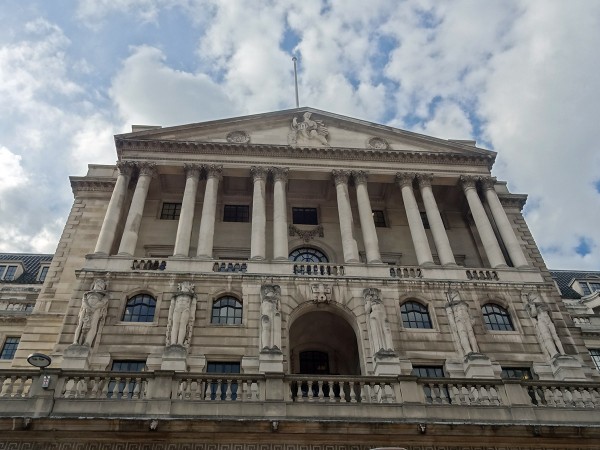 With the publication of the February 2014 Inflation Report the Bank of England has adjusted its forward guidance to the markets.
With the publication of the February 2014 Inflation Report the Bank of England has adjusted its forward guidance to the markets.
As we saw in Part 1 of this blog, the economy should soon fall below the 7% unemployment threshold adopted in the original forward guidance issued last August. But the Bank feels that there is still too much slack in the economy to raise interest rates when unemployment does fall below 7%.
The Bank has thus issued a new vaguer form of forward guidance.
The MPC’s view is that the economy currently has spare capacity equivalent to about 1%–1½% of GDP, concentrated in the labour market. Around half of that slack reflects the difference between the current unemployment rate of 7.1% and an estimate of its
medium-term equilibrium rate of 6%–6½%. The remaining slack largely reflects a judgement that employees would like to work more hours than is currently the case. Companies appear to be operating at close to normal levels of capacity, although this is subject to some uncertainty.
The existence of spare capacity in the economy is both wasteful and increases the risk that inflation will undershoot the target in the medium term. Moreover, recent developments in inflation mean that the near-term trade-off between keeping inflation close to the target and supporting output and employment is more favourable than at the time the MPC announced its guidance last August: CPI inflation has fallen back to the 2% target more quickly than anticipated and, with domestic costs well contained, is expected to remain at, or a little below, the target for the next few years. The MPC therefore judges that there remains scope to absorb spare capacity further before raising Bank Rate.
Just what will determine the timing and pace of tightening? The Bank identifies three factors: the sustainability of the recovery; the extent to which supply responds to demand; and the evolution of cost and price pressures. But there is considerable uncertainty about all of these.
Thus although this updated forward guidance suggests that interest rates will not be raised for some time to come, even when unemployment falls below 7%, it is not at all clear when a rise in Bank Rate is likely to be, and then how quickly and by how much Bank Rate will be raised over subsequent months. Partly this is because of the inevitable uncertainty about future developments in the economy, but partly this is because it is not clear just how the MPC will interpret developments.
So is this new vaguer forward guidance helpful? The following articles address this question.
Articles
Bank of England Governor Carney’s statement on forward guidance Reuters (12/2/14)
Why has Mark Carney tweaked forward guidance? The Telegraph, Denise Roland (12/2/14)
Interest rates: Carney rips up ‘forward guidance’ policy Channel 4 News (12/2/14)
Forward guidance version 2: will the public believe it? The Guardian, Larry Elliott (12/2/14)
Mark Carney adjusts Bank interest rate policy BBC News (12/2/14)
Mark Carney’s almost promise on rates BBC News, Robert Peston (12/2/14)
Did the Bank of England’s Forward Guidance work? Independent, Ben Chu (2/2/14)
Forward Guidance 2.0: Is Carney just digging with a larger shovel? Market Watch, The Tell (12/2/14)
The U.K. Economy: Five Key Takeaways Wall Street Journal, Alen Mattich (12/2/14)
Bank of England pages
Inflation Report, February 2014 Bank of England (12/2/14)
Monetary Policy Bank of England
MPC Remit Letters Bank of England
Forward Guidance Bank of England
Questions
- Summarize the new forward guidance given by the Bank of England.
- Why is credibility an important requirement for policy?
- What data would you need to have in order to identify the degree of economic slack in the economy?
- Why is it difficult to obtain such data – at least in a reliable form?
- What is meant by the ‘output gap’? Would it be a good idea to target the output gap?
- Is it possible to target the rate of inflation and one or more other indicators at the same time? Explain.
 Although the Monetary Policy Committee (MPC) of the Bank of England is independent in setting interest rates, until recently it still had to follow a precise remit set by the government. This was to target inflation of 2% (±1%), with interest rates set to meet this target in 24 months’ time. But things have changed since the new Governor, Mark Carney, took up office in July 2013. And now things are not so clear cut.
Although the Monetary Policy Committee (MPC) of the Bank of England is independent in setting interest rates, until recently it still had to follow a precise remit set by the government. This was to target inflation of 2% (±1%), with interest rates set to meet this target in 24 months’ time. But things have changed since the new Governor, Mark Carney, took up office in July 2013. And now things are not so clear cut.
The Bank announced that it would keep Bank Rate at the current historically low level of 0.5% at least until unemployment had fallen to 7%, subject to various conditions. More generally, the Bank stated that:
The MPC intends at a minimum to maintain the present highly stimulative stance of monetary policy until economic slack has been substantially reduced, provided this does not entail material risks to price stability or financial stability.
This ‘forward guidance’ was designed to provide more information about future policy and thereby more certainty for businesses and households to plan.
But unemployment has fallen rapidly in recent months. It fell from a 7.7% average for the three months May to July 2013 to 7.1% for the latest available three months (September to November 2013).  And yet there is still considerable slack in the economy.
And yet there is still considerable slack in the economy.
It now, therefore, looks highly unlikely that the MPC will raise Bank Rate as soon as unemployment falls below 7%. This then raises the question of how useful the 7% target has been and whether, if anything, it has created further uncertainty about future MPC decisions.
The following still appears on the Bank of England website:
The MPC intends at a minimum to maintain the present highly stimulative stance of monetary policy until economic slack has been substantially reduced, provided this does not entail material risks to price stability or financial stability.
But this raises two questions: (a) how do you measure ‘economic slack’ and (b) what constitutes a substantial reduction?
So what should the Bank do now? What, if any, forward guidance should it offer to the markets? Will that forward guidance be credible? After all, credibility among businesses and households is an important condition for any policy stance. According to Larry Elliott in the first article below, there are five options.
Articles
Bank of England’s method of setting interest rates needs reviewing The Guardian, Larry Elliott (9/2/14)
Mark Carney set to adjust Bank interest rate policy BBC News (12/2/14)
Forward guidance: dead and alive BBC News, Robert Peston (11/2/14)
What “forward guidance” is, and how it (theoretically) works The Economist (11/2/14)
BOE’s forward guidance 2.0: Cheap talk, or big change? Market Watch (11/2/14)
Bank of England pages
Monetary Policy Bank of England
MPC Remit Letters Bank of England
Forward Guidance Bank of England
Questions
- What data would you need to have in order to identify the degree of economic slack in the economy?
- Why is it difficult to obtain such data – at least in a reliable form?
- Why might the issuing of the forward guidance last July have itself contributed to the fall in unemployment?
- Why is it difficult to obtain such data – at least in a reliable form?
- Why is credibility an important requirement for policy?
- Why may LFS unemployment be a poor guide to the degree of slack in the economy?
- Discuss the relative merits of each of the five policy options identified by Larry Elliott.
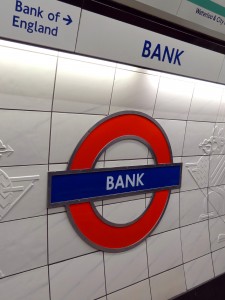 The Bank of England was granted independence to set interest rates back in 1997. This is known as instrument independence. However, the remit is set by the government and so it does not have goal independence. Amongst the policy announcements on Budget day (Wed 20 March), the government detailed amendments to the Bank’s remit. In particular, the remit now more explicitly acknowledges that, in exceptional circumstances, the Bank might need to pay more attention to output variability.
The Bank of England was granted independence to set interest rates back in 1997. This is known as instrument independence. However, the remit is set by the government and so it does not have goal independence. Amongst the policy announcements on Budget day (Wed 20 March), the government detailed amendments to the Bank’s remit. In particular, the remit now more explicitly acknowledges that, in exceptional circumstances, the Bank might need to pay more attention to output variability.
Despite the amendments to its remit, the Bank of England continues to have a forward-looking operational inflation rate target of 2 per cent (with a range of tolerance of up to 1 percentage point). The MPC therefore sets the Bank Rate, i.e. the rate at which it engages in short-term lending to financial institutions, to affect general interest rates in the economy. In turn, the level of interest rates is assumed to affect the level of aggregate demand and, hence, the rate of demand-pull inflation as well as inflation rate expectations.
A key economic benefit of delegating interest rate decisions to the Monetary Policy Committee (MPC) is thought to be lower inflation rate expectations. By granting the Bank of England operational or instrument independence, inflation announcements have a credibility that they would not if monetary policy was under the control of elected politicians. So why change the inflation rate remit?
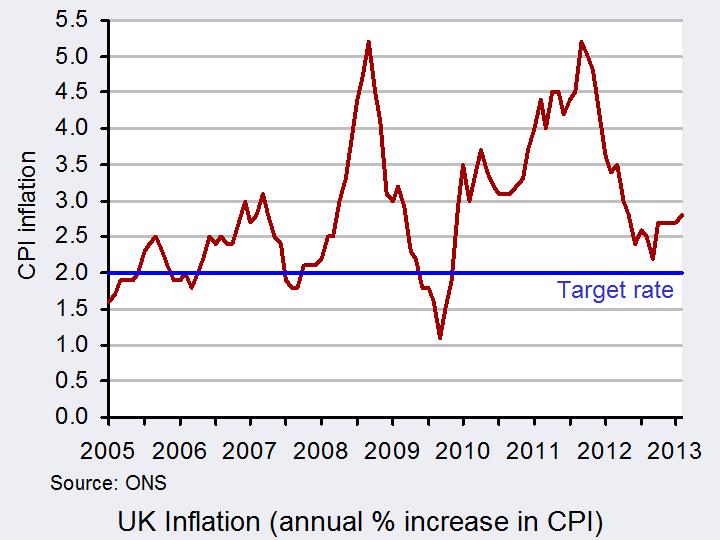 The government remains of the view that inflation rate targeting has served the UK well, despite inflation being persistently above target for the past three years (see chart: click here for a PowerPoint). However, it has sought to clarify how the Bank of England might be expected to behave in exceptional circumstances when the economy is buffeted by shocks and disturbances, such as those that it has faced following the financial crisis of the late 2000s. The government argues that in such circumstances the output volatility that could result by ensuring that inflation remains on target could be undesirable. Therefore, the MPC should give consideration to the volatility of output that targeting inflation would cause in such exceptional circumstances.
The government remains of the view that inflation rate targeting has served the UK well, despite inflation being persistently above target for the past three years (see chart: click here for a PowerPoint). However, it has sought to clarify how the Bank of England might be expected to behave in exceptional circumstances when the economy is buffeted by shocks and disturbances, such as those that it has faced following the financial crisis of the late 2000s. The government argues that in such circumstances the output volatility that could result by ensuring that inflation remains on target could be undesirable. Therefore, the MPC should give consideration to the volatility of output that targeting inflation would cause in such exceptional circumstances.
The amended remit says that in setting monetary policy the MPC should communicate to the public the trade-offs that are inherent in meeting its forward-looking inflation rate target. Therefore, during exceptional times, the Bank may communicate that the volatility of output resulting from returning inflation to target would be so large that it is prepared to keep monetary policy looser than it otherwise would. This could mean indicating a time-frame over which it would be expected to keep interest rates lower than otherwise. By communicating this, it would in effect be looking to affect peoples’ expectations and, importantly, their behaviour. The prospect of prolonged low interest rates, such as those currently being experienced, might encourage greater expenditure, especially as a result of lower borrowing costs – though of course this is not guaranteed!
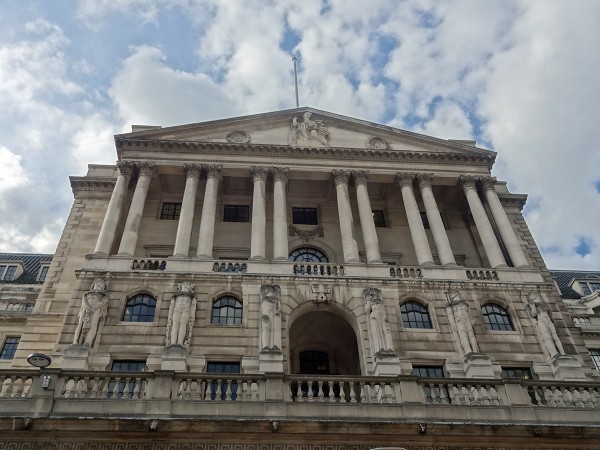 The Governor will continue to write an open letter to the Chancellor of the Exchequer if inflation moves away from the target by more than 1 percentage point in either direction. However, in a change to the previous remit, this will be done in conjunction with the minutes of the MPC meeting that follow the publication of the official inflation figures by the Office for National Statistics. By publishing the letter alongside the minutes, it gives the MPC more time to consider its strategy and to give due consideration to the trade-offs in returning inflation to the target. If inflation remains more than 1 percentage point above or below the target the Governor will need to write a further letter after three months. This letter would be alongside the minutes of the third subsequent meeting of the MPC.
The Governor will continue to write an open letter to the Chancellor of the Exchequer if inflation moves away from the target by more than 1 percentage point in either direction. However, in a change to the previous remit, this will be done in conjunction with the minutes of the MPC meeting that follow the publication of the official inflation figures by the Office for National Statistics. By publishing the letter alongside the minutes, it gives the MPC more time to consider its strategy and to give due consideration to the trade-offs in returning inflation to the target. If inflation remains more than 1 percentage point above or below the target the Governor will need to write a further letter after three months. This letter would be alongside the minutes of the third subsequent meeting of the MPC.
Some commentators argue that the amended remit is merely a reflection of the current reality. In other words, the remit is being rewritten in a way which reflects how the MPC is currently making its interest rate decisions. Others are concerned that what was a simple and clear objective is now not the case and that this may have implications for the credibility of monetary policy. Whatever the rights and wrongs, Wednesday’s announcement was an important development in the history of central bank independence in the UK.
Documents
Remit for the Monetary Policy Committee Bank of England, March 2013
Governor Response to the remit for the Monetary Policy Committee Bank of England , March 2013
Articles
Bank of England handed new remit in Osbourne’s budget Guardian, Josephine Moulds (20/3/13)
Budget: Changing the Bank of England Remit Sky News, Ed Conway (20/3/13)
Budget 2013: Bank of England’s monetary policy remit changed Telegraph, Angela Monaghan (20/3/13)
King warns against ‘major change’ to Bank’s remit ITV News (15/3/13)
Chancellor adjusts Bank of England inflation remit Financial Times, Nick Reeve (20/3/13)
Budget 2013: Bank of England gets new orders BBC News (20/3/13)
Questions
- Why would monetary policy be expected to be more credible under an independent central bank?
- How might a lack of credibility over monetary policy affect the economy’s rate of inflation?
- Outline the advantages and disadvantages of the changes to the Bank of England’s remit.
- Central bank independence constrains discretion over monetary policy. Should governments constrain their discretion over fiscal policy? What are the advantages and disadvantages?
- Explain how the MPC tries to affect the rate of inflation through changes in the Bank Rate?
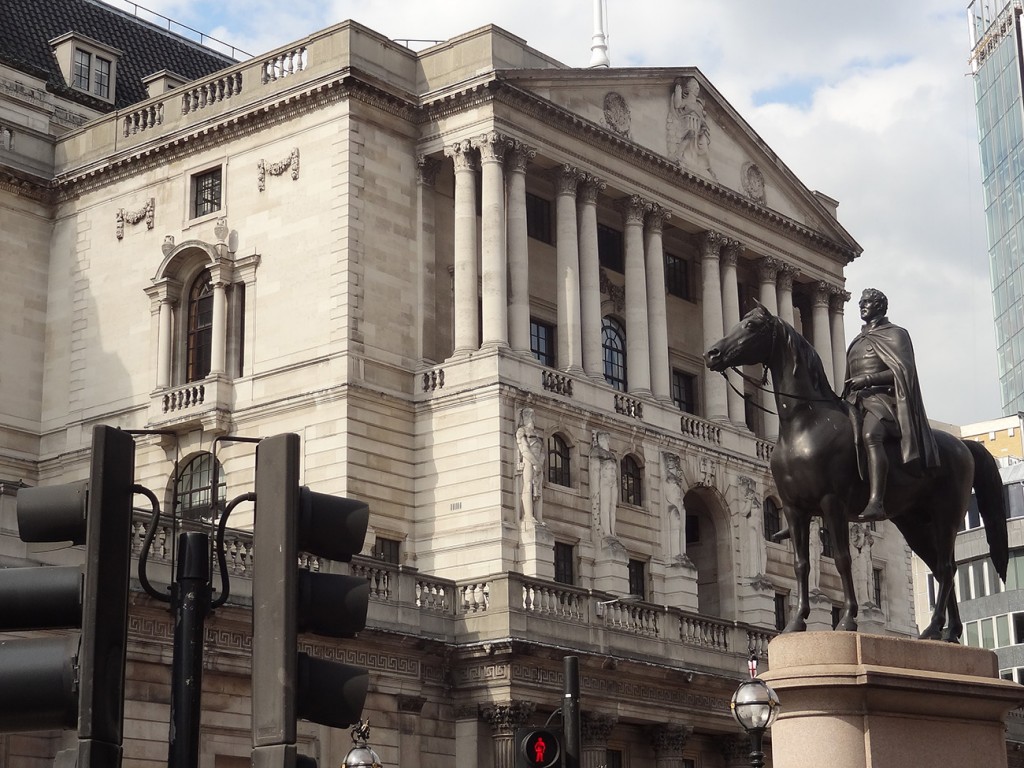 Should the object of monetary policy be simply one of keeping inflation within a target range? In a speech given on 9 October, the Governor of the Bank of England, Sir Mervyn King, questioned whether the interest-rate setting policy of the Monetary Policy Committee (MPC) has been too narrow.
Should the object of monetary policy be simply one of keeping inflation within a target range? In a speech given on 9 October, the Governor of the Bank of England, Sir Mervyn King, questioned whether the interest-rate setting policy of the Monetary Policy Committee (MPC) has been too narrow.
He considered whether interest rates should have been higher before the financial crisis and crash of 2007–9. This could have helped to reduce the asset price bubble and discouraged people from taking out excessive loans.
But then there is the question of the exchange rate. Would higher interest rates have pushed the exchange rate even higher, with damaging effects on exports? Today the trade weighted exchange rate is some 20% lower than before the crash. The government hopes that this will encourage a growth in exports and help to fuel recovery in demand. But as Dr King said, “The strategy of reducing domestic spending and relying more on external demand is facing a real problem because not everyone can do it at the same time.”
 Then there is the question of economic growth. Should a target rate of growth be part of the MPC’s target? Should the MPC adopt a form of Taylor rule which targets a weighted average of the inflation rate and the rate of economic growth?
Then there is the question of economic growth. Should a target rate of growth be part of the MPC’s target? Should the MPC adopt a form of Taylor rule which targets a weighted average of the inflation rate and the rate of economic growth?
Certainly monetary policy today in the UK and many other countries is very different from five years ago. With interest rates being close to zero, there is little scope for further reductions; after all, nominal rates cannot fall below zero, otherwise people would be paid for borrowing money! So the focus has shifted to the supply of money. Several attempts have been made to control the money supply through programmes of quantitative easing. Indeed many economists expect further rounds of quantitative easing in the coming months unless there is a substantial pick up in aggregate demand.
So what should be the targets of monetary policy? The following articles look at Dr King’s speech and at various alternatives to a simple inflation target.
Articles
Mervyn King says must face up to monetary policy’s limits’ Reuters, David Milliken and Sven Egenter (9/10/12)
Bank of England’s Mervyn King defends low interest rates pre-crisis The Telegraph, Emma Rowley (9/10/12)
Banks should have had a leverage cap before crash, says Mervyn King The Guardian, Heather Stewart and Phillip Inman (9/10/12)
King Says BOE Must Keep Targeting Inflation as Tool Revamp Looms Bloomberg, Scott Hamilton and Svenja O’Donnell (9/10/12)
After 20 years, time to change Merv’s medicine? Channel 4 News blogs, Faisal Silam (9/10/12)
King signals inflation not primary focus Financial Times, Norma Cohen and Sarah O’Connor (9/10/12)
Should Bank start the helicopter? BBC News, Stephanie Flanders (12/10/12)
Speech
Twenty years of inflation targeting Bank of England speeches, Mervyn King (9/10/12)
Questions
- What are the arguments for using monetary policy to target a particular rate of inflation?
- Would it ever be a good idea to adjust the targeted rate of inflation up or down and if so when and why?
- Explain how a Taylor rule would work and in what ways it is superior or inferior to pursuing a simple inflation target.
- Are attempts to control the money supply through quantitative easing (or tightening) consistent or inconsistent with pursuing an inflation target? Explain.
- What are the arguments for and against abandoning targeting in monetary policy and replacing it with discretionary policy that takes a number of different macroeconomic indicators into account?
 In March 2009, interest rates in the UK fell to a record low of 0.5%. At the time, it is unlikely that anyone expected that we would still be talking about such low interest rates 6 years later. There has been no movement in the UK rate of interest over the past 6 years and many believe that we are unlikely to see an increase before 2016 or late 2015 at the earliest. With inflation at 0.3%, there is ‘little reason to raise the cost of borrowing’.
In March 2009, interest rates in the UK fell to a record low of 0.5%. At the time, it is unlikely that anyone expected that we would still be talking about such low interest rates 6 years later. There has been no movement in the UK rate of interest over the past 6 years and many believe that we are unlikely to see an increase before 2016 or late 2015 at the earliest. With inflation at 0.3%, there is ‘little reason to raise the cost of borrowing’.






